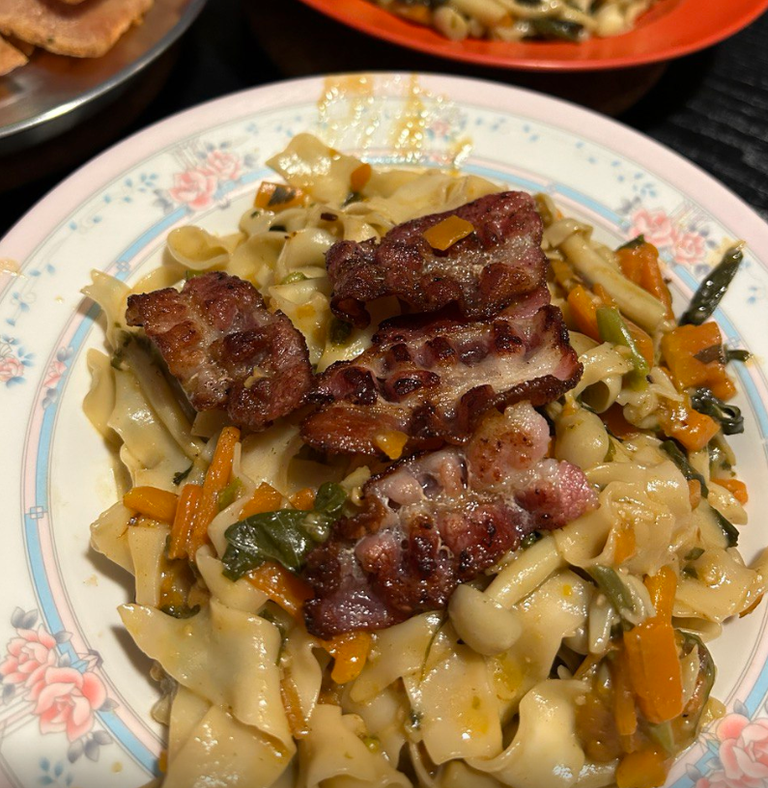
Hey Hive!
We're back with more of our home cooking! If you're unfamiliar with this series, it's where I showcase some of the food we've been making at home since we've been cooking a lot nowadays! Both because it's cheaper and also healthier to cook for yourself compared to eating out. While I usually stick to the usual recipes I do like to try new ones once in a while and figured I'd share the new ones I've tried.
I came across this recipe on my instagram reels a while back and it looked pretty simple so I thought I'd try it! Here's the link if you want to check it out for yourself!
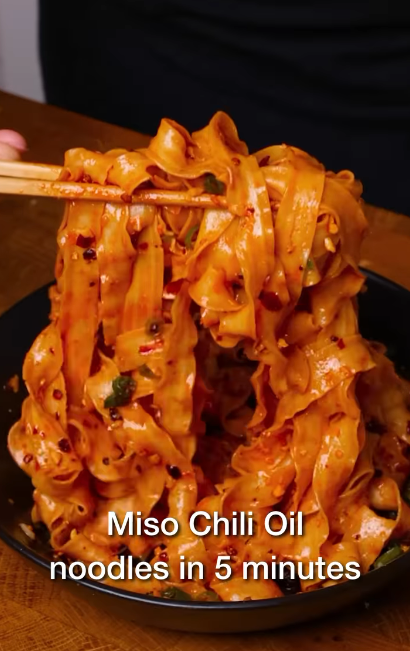
If you want the link to the written recipe here it is.
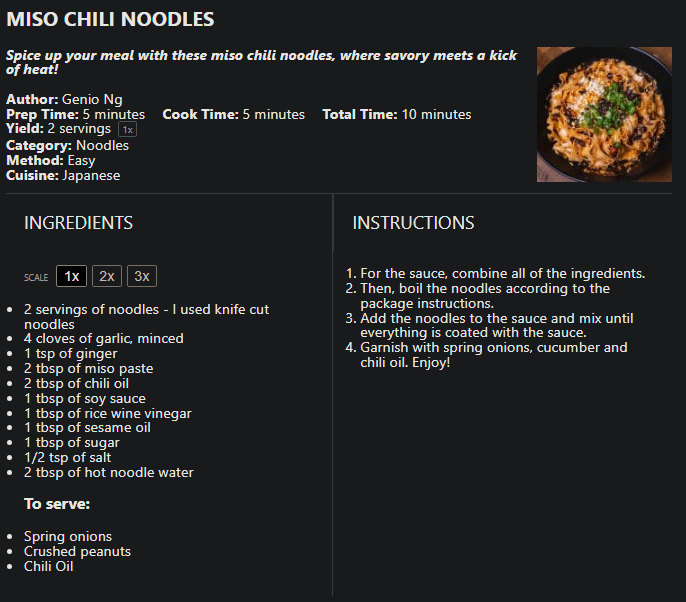
I had some leftover bacon to use and some miso paste that has been sitting in my fridge for a while so I thought I try this recipe but with bacon for some added protein.
Here are the ingredients I used:
- 3 servings of knife cut noodles
- 2 carrots
- 500g spinach
- 200g bacon
- 500g shimeji mushrooms
For the sauce:
- 1 tbsp chopped garlic
- 1 tsp ginger
- 2 tbsp miso paste
- 2 tbsp chili oil
- 1 tbsp soy sauce
- 1 tbsp Chinese Shao Hsing wine
- 1 tbsp sesame oil
- 1/2 tsp of salt
- 1 tbsp of sugar
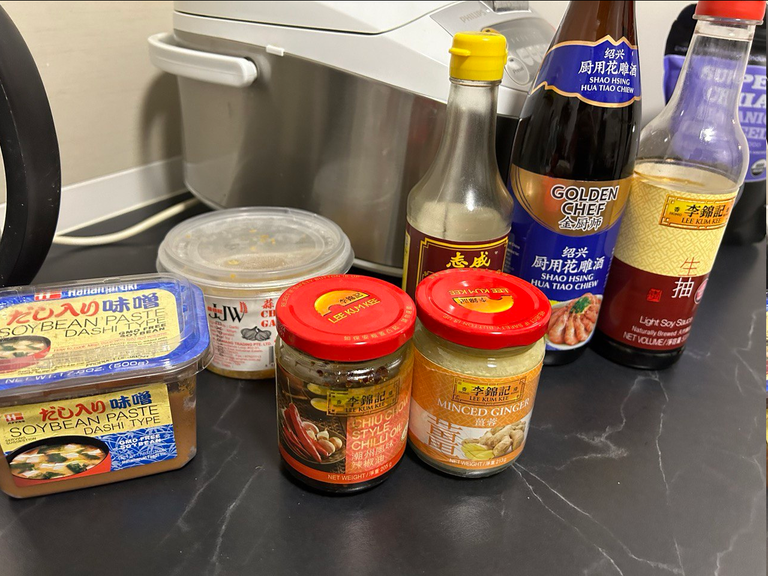
Step 1: Prepare the vegetables by slicing the carrots julienne and the spinach into smaller portions.
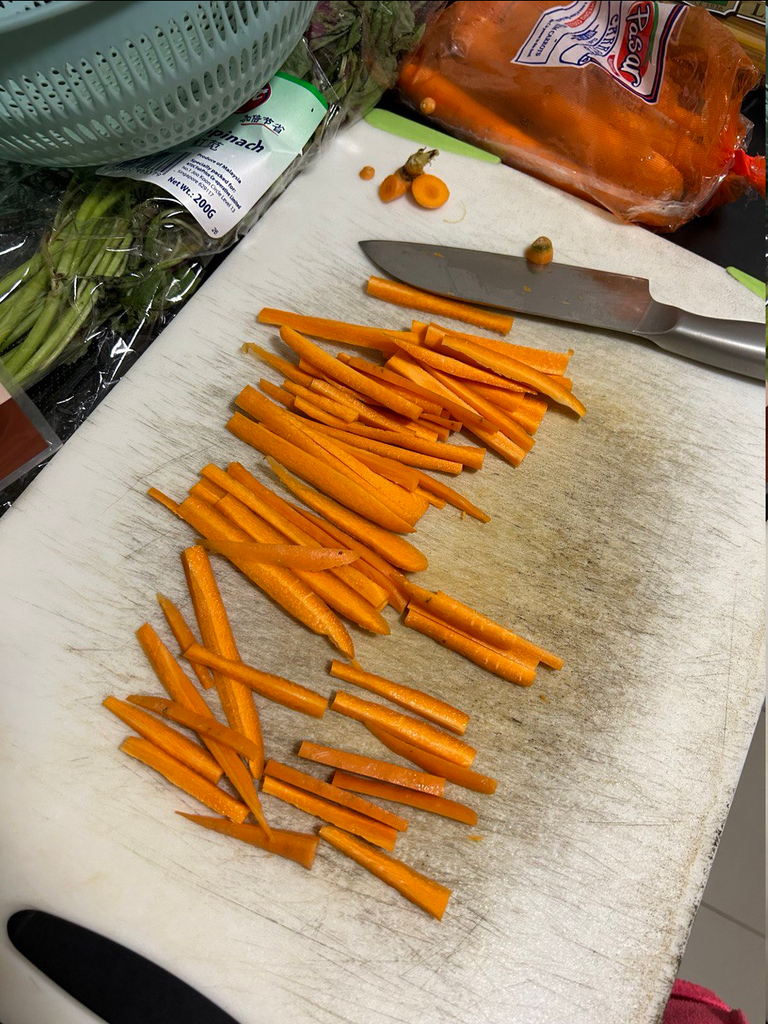
Wash and separate the mushrooms as well.
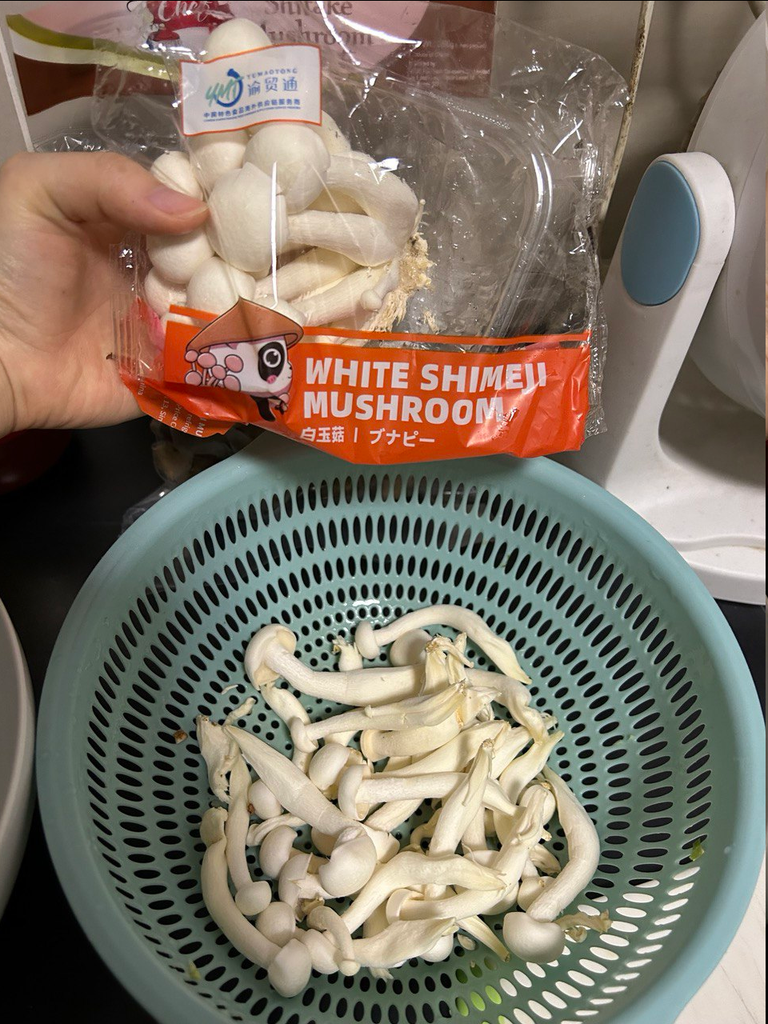
Step 2: Boil the veggies in a pot of boiling water. Sorry I don't have a picture of this.
Step 3: Once the veggies have been boiled until they're soft, add in the noodles.
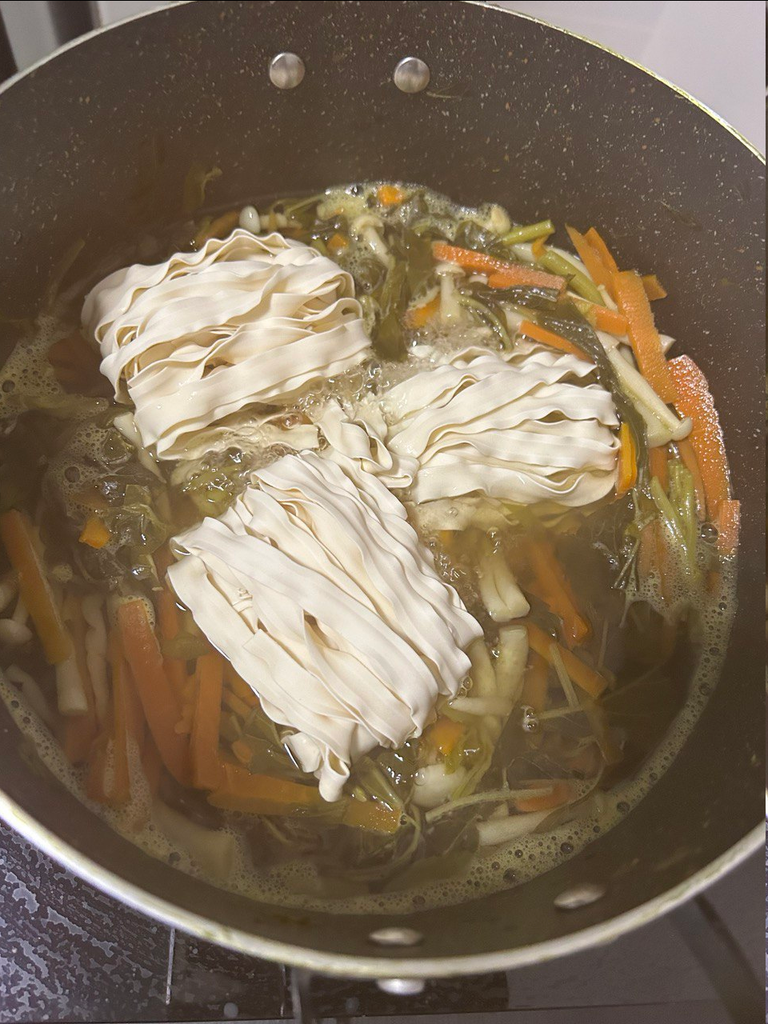
These knife-cut noodles are typical for Shanxi cuisine and are made by thinly slicing a block of dough with a knife directly into boiling water. The resulting noodles are ribbon-shaped, fairly thick, and chewy when cooked.
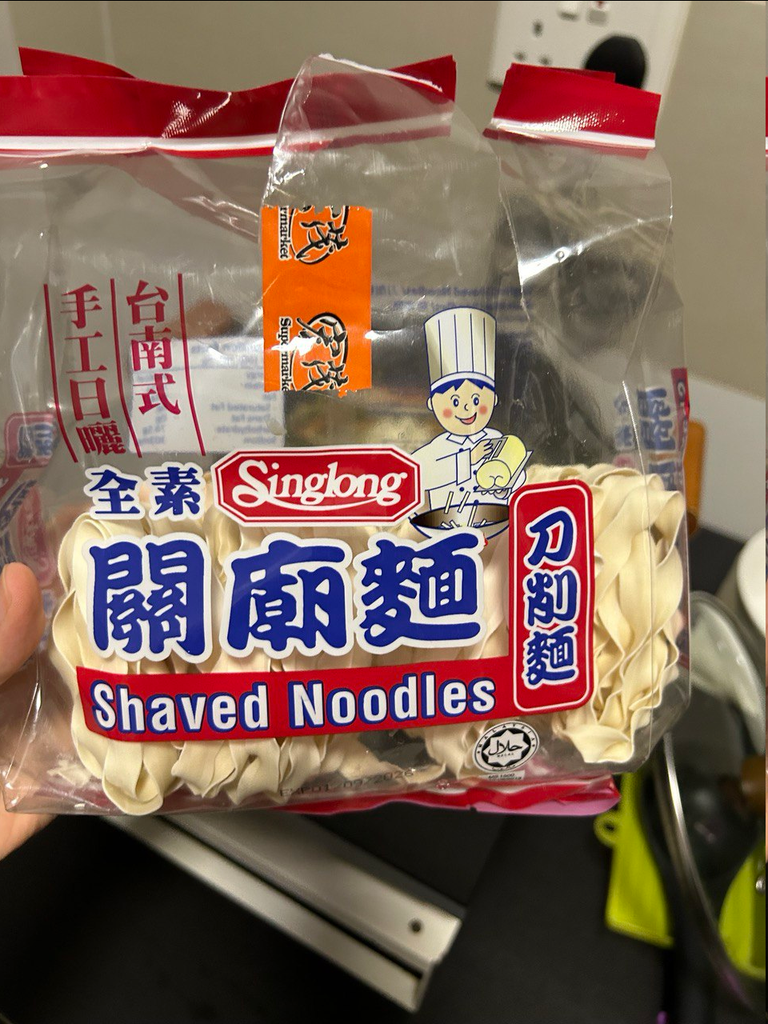
Step 4: While the noodles are boiling we can prepare the sauce by mixing it the miso paste, chili oil, ginger, garlic, salt, sugar, Chinese wine, soy sauce and sesame oil.
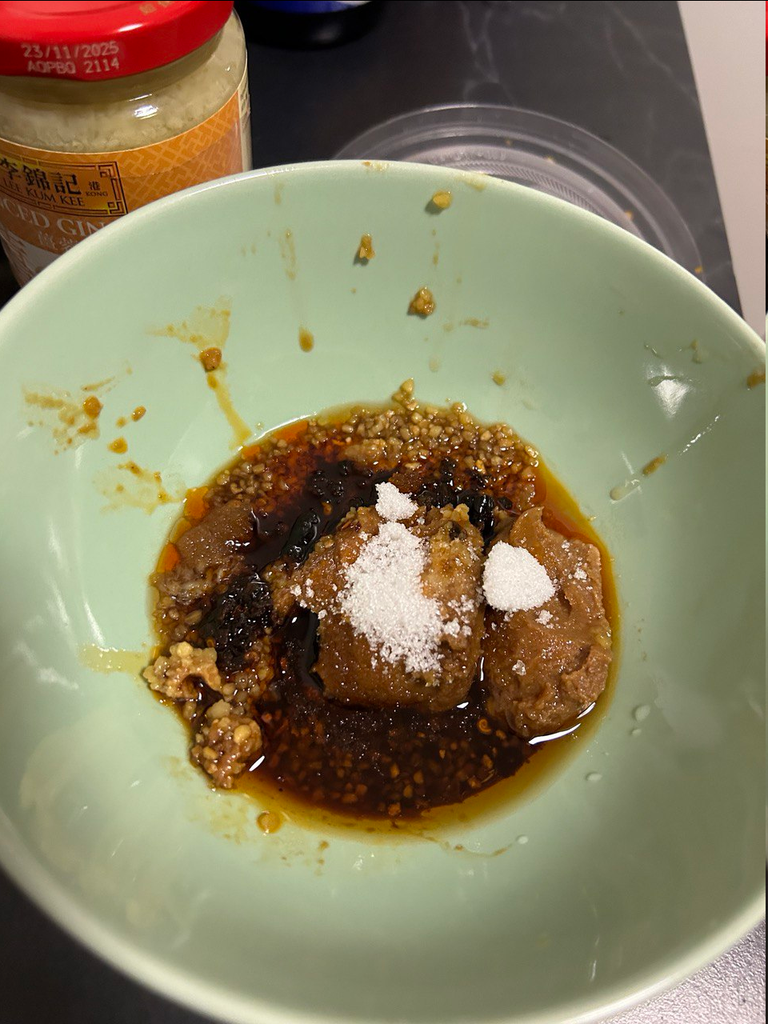
Step 5: Once the noodles have been boiled to its recommended doneness, take them out of the pot and drain the noodles.
Step 6: Fry the bacon or whatever protein you're adding. I recommend some luncheon meat, minced pork or chicken. Of course if you're vegetarian you can skip this step or add some fried tofu.
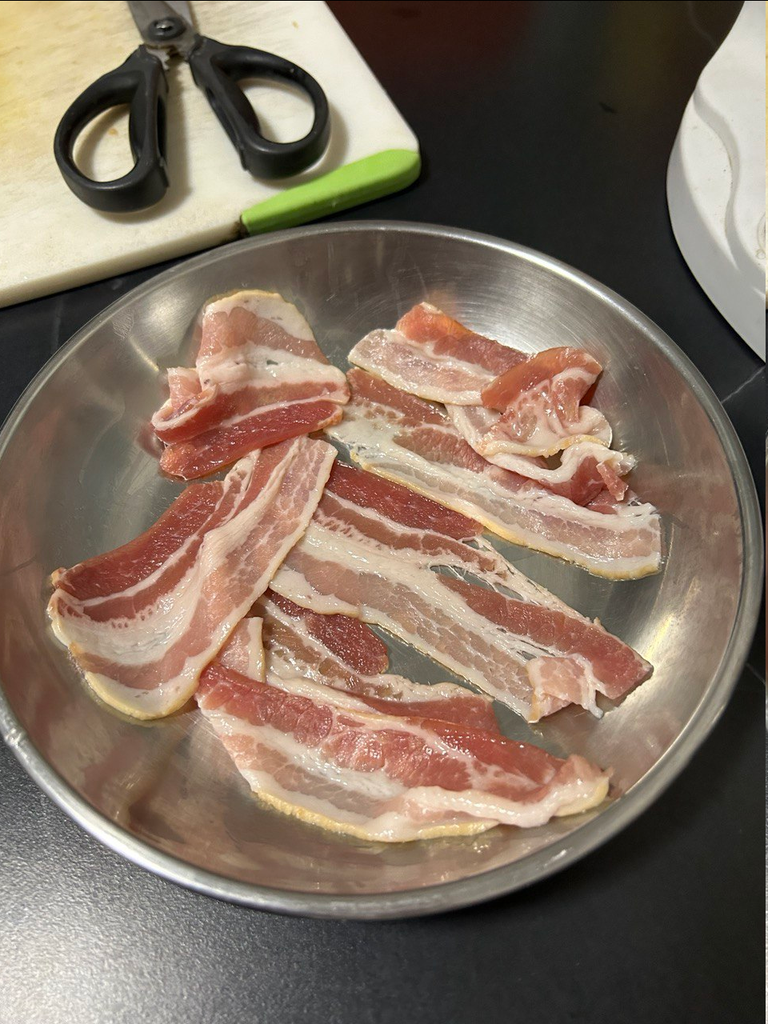
Sorry I forgot to take a picture of the bacon in the wok, because bacon fries quickly and I was also referring to the recipe.
Step 7: Once the bacon was fried, take it off the wok or pan and set it aside. You can also add some extra garlic here before the next step if you want more aromatics.
Step 8: Put the noodles back into the wok and pour the sauce over the noodles, tossing it to make sure the noodles are well coated.
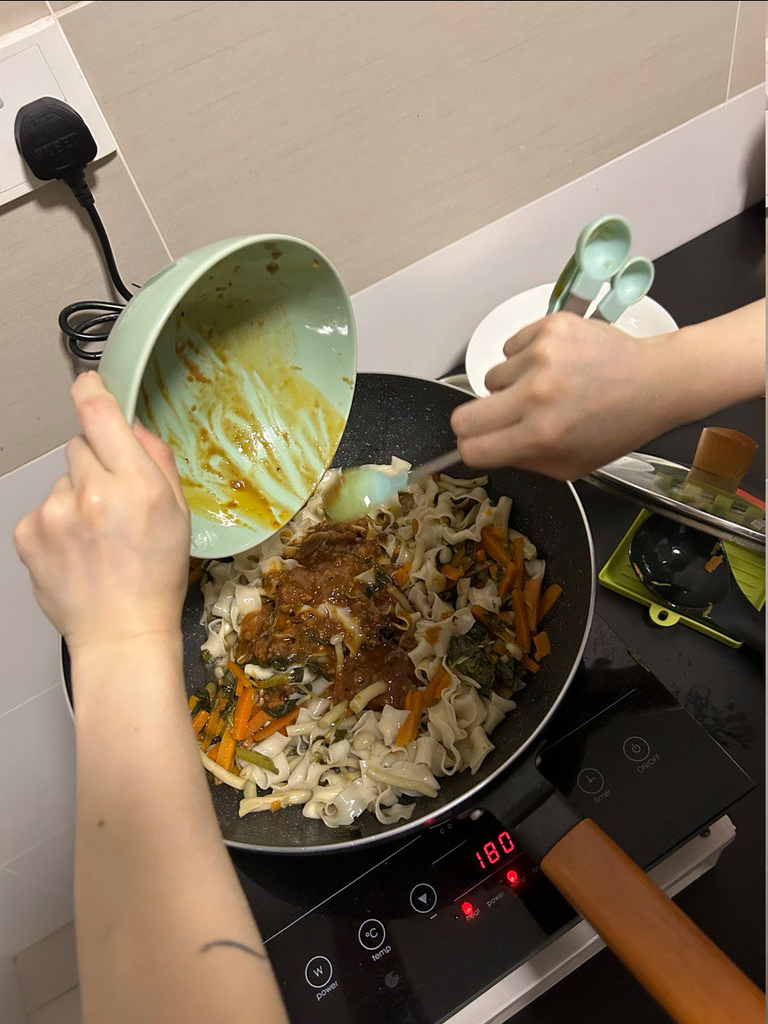
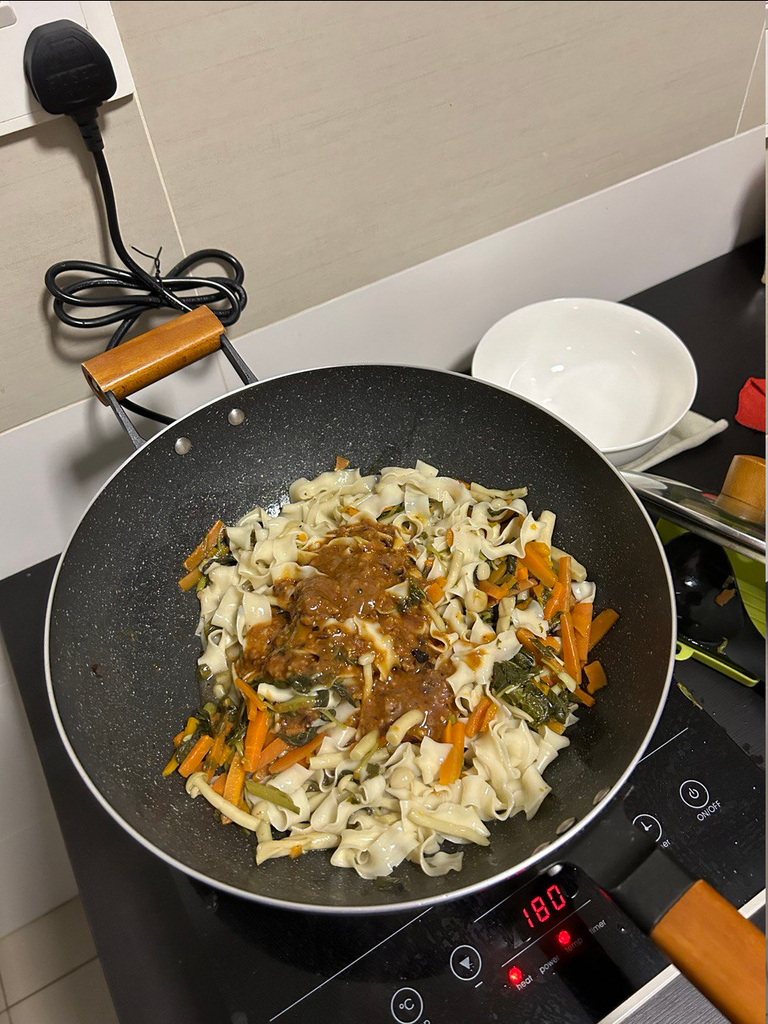
Once the noodles are well coated in the sauce, you're done! The video doesn't show that you need to fry the noodles again but since I had the bacon oil I didn't want to waste it so I decided to fry the noodles in there. I also had quite a lot of noodles so this would allow my to mix it with the sauce more effectively.
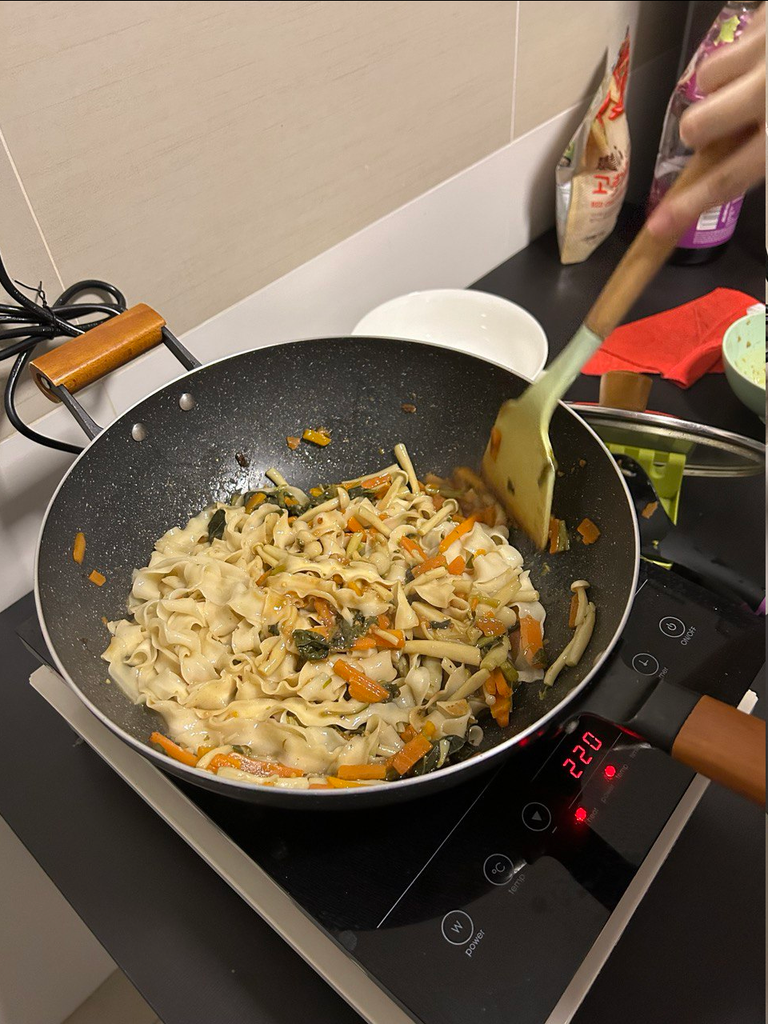
It's time to plate! We scooped some noodles onto our plates and topped it with the nicely fried bacon. Sean also prepared some air-fried luncheon meat as a side although I told him we already had bacon.
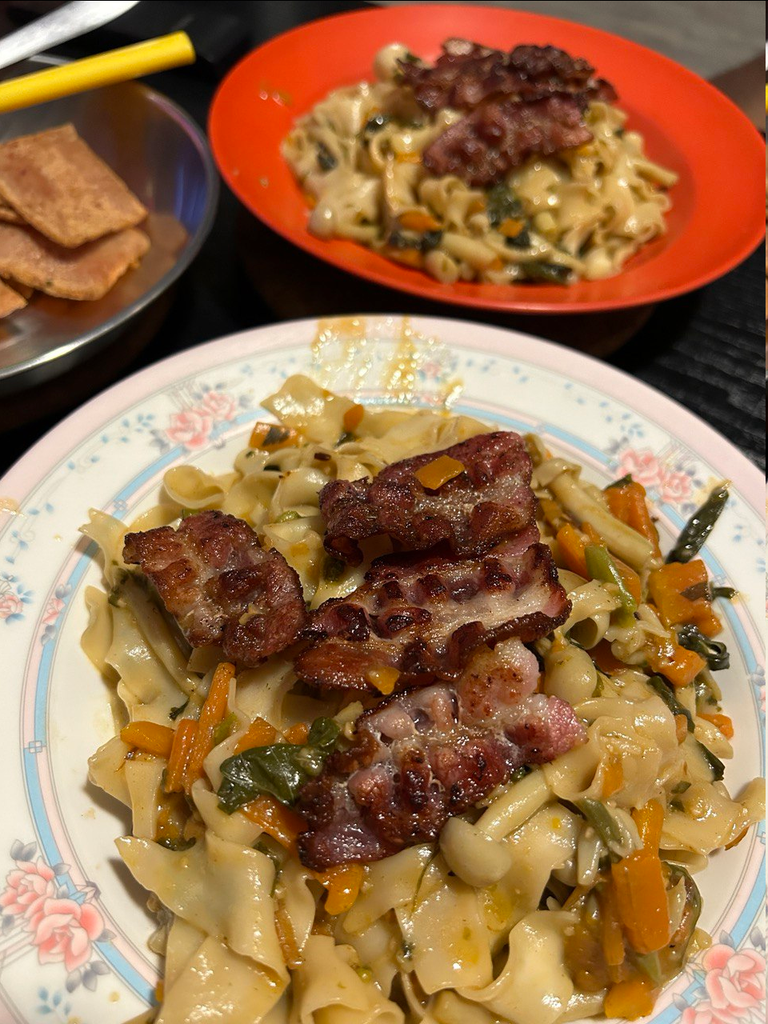
Overall it was a very delicious meal! The noodles were nicely coated in the sauce, they were soft and slightly chewy, and both savoury and spicy because of the sauce. The bacon also provided a nice crispy texture to contrast the soft noodles. The carrots also gave a slight sweetness to the spicy sauce.
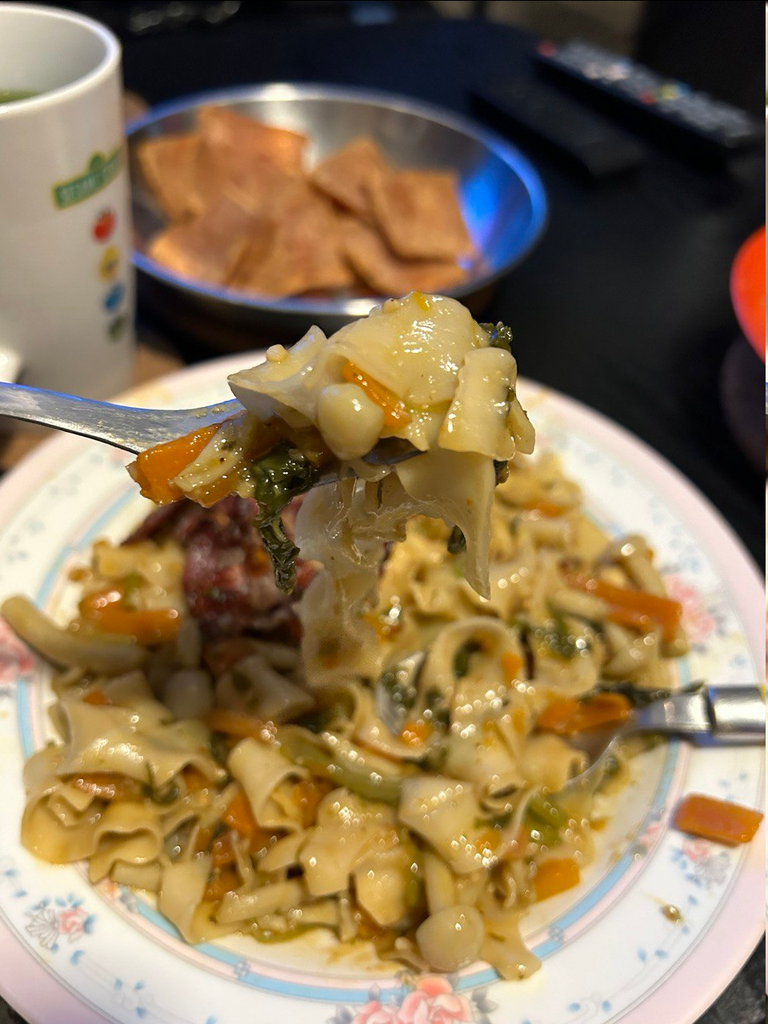
All in all, a very delicious and simple noodle dish indeed! The recipe itself is pretty good, but adding the bacon definitely elevated it a little bit. I would definitely recommend some protein to go with the recipe, maybe at least an egg you can boil with the noodles. But the recipe also works on its own, which makes it super simple.
I really like these knife-cut noodles as well, since it's thick and slightly chewy. I'll definitely be making more recipes with these noodles in the future.
Thanks so much for reading!

To find out more about me, check out my intro post here!

